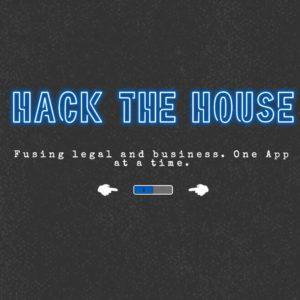
The next time you’re tapping your iPhone or reviewing a contract on your MacBook Pro, you might want to thank hackathons.
In 1975, the Homebrew Computer Club met for the first time in Menlo Park, California. The group of technology enthusiasts – a group credited as the originator of hackathons – united to talk shop and Altair 8800, swap parts and share information on how to DIY computers. Members influenced by the club included … wait for it … Steve Jobs and Steve Wozniak, who credited the organization with inspiring Apple’s founding.
Hackathons organized more concretely in 1999, with groups collaborating on cryptographic software and a program for Palm Vs. Throughout the years, hackathons have grown in size and frequency, creating companies including GroupMe and Zapier and finding new ways to solve problems. For example, one hackathon focused on discovering how digital technologies can support the epilepsy community. There’s even a company that operates a league for student hackathons.
What’s a Hackathon?
We hear the word a lot. While some may be quite familiar with it, others may not. So let’s define it. Hackathon is a meshing of “hack” and “marathon.” In a general sense, it’s a collaborative group that works together to solve problems using technology. For example, Onit united with Consilio and Adobe earlier this year to create the Evergreen Donation Emergency Network (EDEN) for a hackathon to solve complex COVID-19 problems. The app, built on Onit Apptitude (a workflow and business process automation platform), connects donors with excess supplies to organizations in need. You can view the EDEN demo here.
Who can Participate?
Hackathons aren’t just for coders. The best results come when people with different strengths and backgrounds are involved. They bring their perspective to the project, which creates stronger results. For example, coders can build a workflow to solve a problem. Still, you need people with intimate knowledge of (for example) the corporate legal operations or process experts to ensure you get the best outcome.
Hack the House
Now, Onit continues to foster innovation with the launch of a new hackathon: Hack the House.
 Hack the House, a collaboration with Cosmonauts, is a friendly competition between Onit customers, partners and staff to see who can build the most useful and compelling workflow and collaboration solution using Onit Apptitude.
Hack the House, a collaboration with Cosmonauts, is a friendly competition between Onit customers, partners and staff to see who can build the most useful and compelling workflow and collaboration solution using Onit Apptitude.
Each team consists of legal and business experts, certified App Builders and project managers. The teams will have three weeks of virtual hackathon time to identify a challenge to solve, define requirements and build the solution.
Hack the House has of five teams, with each one focused on a particular challenge theme: Team IP, Team HR, Team Europe, Team Diversity and Team Pro Bono.
Once each team builds its solution, the Onit sales engineering team will help them put together a demo story and short video to highlight the solution’s strengths. A judging panel of in-house legal leaders and a public vote open to everyone will determine the winner.
That’s right – you can vote on which team should win. To keep tabs on the hackathon’s project, sign up for updates here. You’ll want to sign up soon because the team members will be released next week.
We’ll announce the winner in early December. Good luck to all the teams!
Workflow and Business Process Automation for Corporate Legal Operations
Corporate legal departments have used Onit Apptitude for years to build innovative solutions to solve enterprise challenges. More than 5,500 apps and 130 solutions have been built on Apptitude, with varying uses such as enterprise legal management, automating the TREAD reporting process and managing the necessary business processes, reviews and approvals for the transfer of assets between portfolio companies. You can read about all the different ways corporate legal has leaned on Apptitude here.
Remember, sign up for Hack the House updates. You’ll be hearing more soon!










